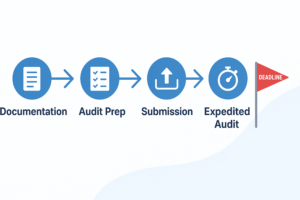Although fall is still a few weeks away, it isn’t too early for Washington stormwater permittees to prepare for the rain to return. This is particularly important due to this year’s exceptionally dry summer in the Pacific Northwest. Dry conditions cause pollutants to build up, which creates the potential for a “first flush” effect—high concentrations of pollutants in stormwater discharge in the first storm event following a long dry period. The Industrial Stormwater General Permit requires permittees to collect stormwater samples during the first storm event on or after October 1. Because of this year’s conditions, it is likely that first flush effects will be observed in these samples. If permittees exceed their pollutant benchmarks, corrective actions are required.
Permittees can take a few steps to avoid or mitigate this risk:
• Implement Best Management Practices (BMPs) during the summer.
• Consider additional BMPs as needed, such as sweeping more frequently during dry periods. Sweeping just prior to October 1st can also reduce first flush effects.
• Quickly identify and address problem areas at their facilities.
It is possible that permittees will exceed their benchmarks in spite of their best efforts. Therefore, permittees should plan ahead for potential corrective actions, considering options that are appropriate to the level of corrective action needed. This helps to ensure that the corrective action is done in accordance with the ISGP and in a timely fashion.
If you need assistance with any aspects of stormwater management, contact Freer Consulting at (206) 285-9044 or [email protected]
https://www.freerconsulting.com/environmental-compliance-consultants







